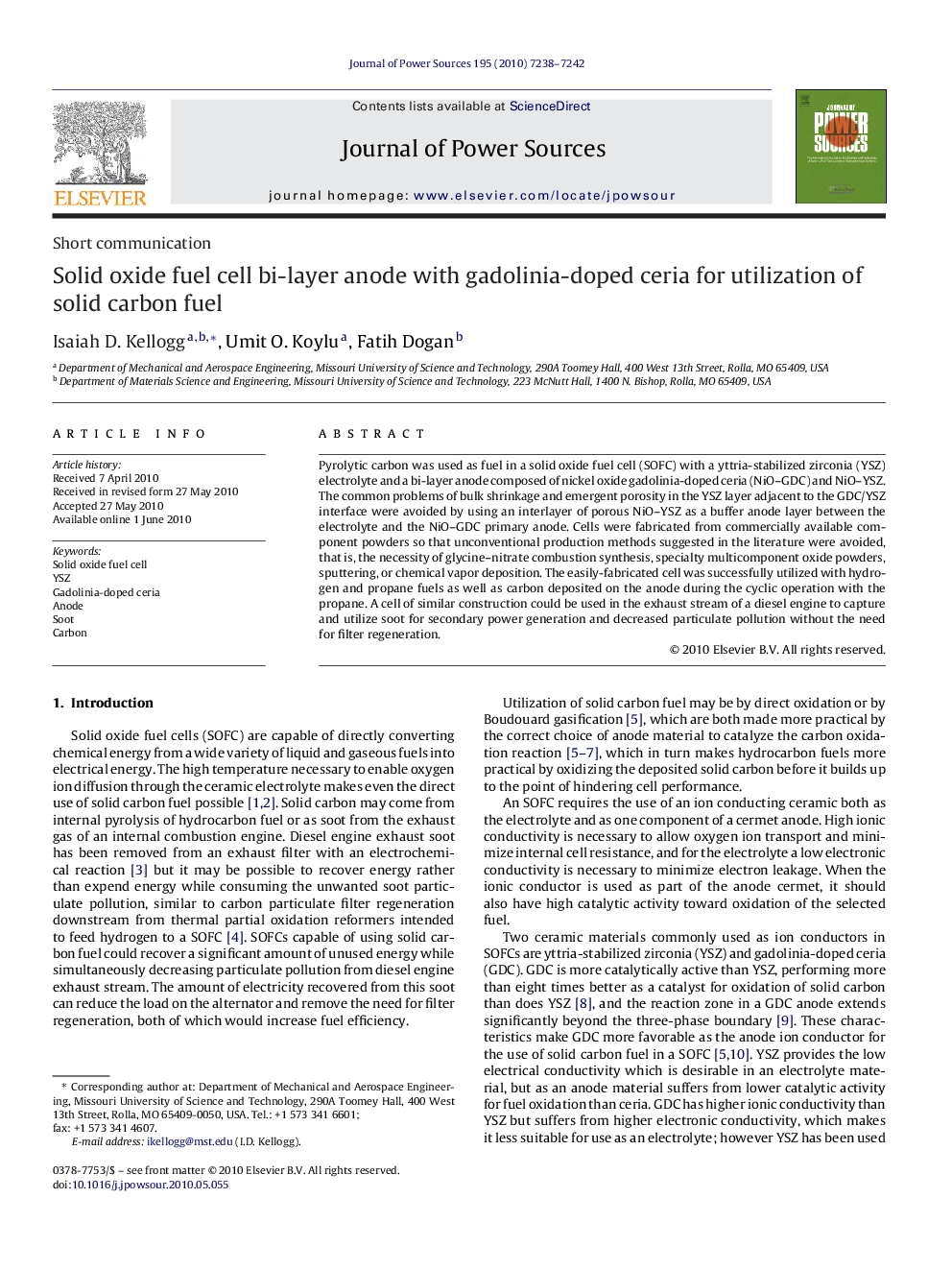| Article ID | Journal | Published Year | Pages | File Type |
|---|---|---|---|---|
| 1284869 | Journal of Power Sources | 2010 | 5 Pages |
Pyrolytic carbon was used as fuel in a solid oxide fuel cell (SOFC) with a yttria-stabilized zirconia (YSZ) electrolyte and a bi-layer anode composed of nickel oxide gadolinia-doped ceria (NiO–GDC) and NiO–YSZ. The common problems of bulk shrinkage and emergent porosity in the YSZ layer adjacent to the GDC/YSZ interface were avoided by using an interlayer of porous NiO–YSZ as a buffer anode layer between the electrolyte and the NiO–GDC primary anode. Cells were fabricated from commercially available component powders so that unconventional production methods suggested in the literature were avoided, that is, the necessity of glycine–nitrate combustion synthesis, specialty multicomponent oxide powders, sputtering, or chemical vapor deposition. The easily-fabricated cell was successfully utilized with hydrogen and propane fuels as well as carbon deposited on the anode during the cyclic operation with the propane. A cell of similar construction could be used in the exhaust stream of a diesel engine to capture and utilize soot for secondary power generation and decreased particulate pollution without the need for filter regeneration.
